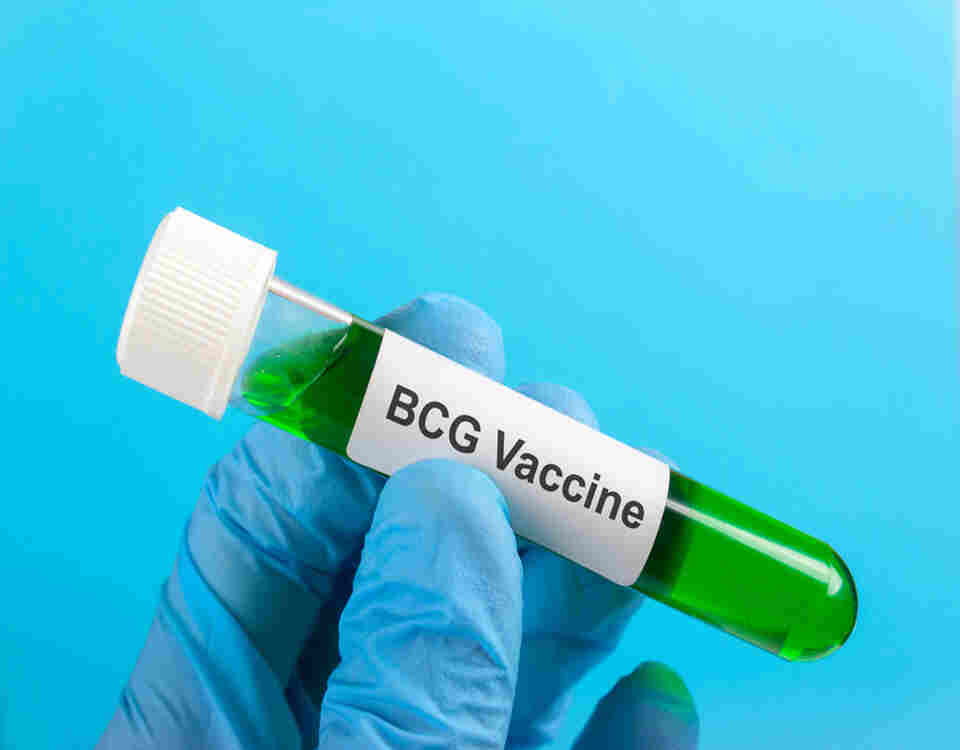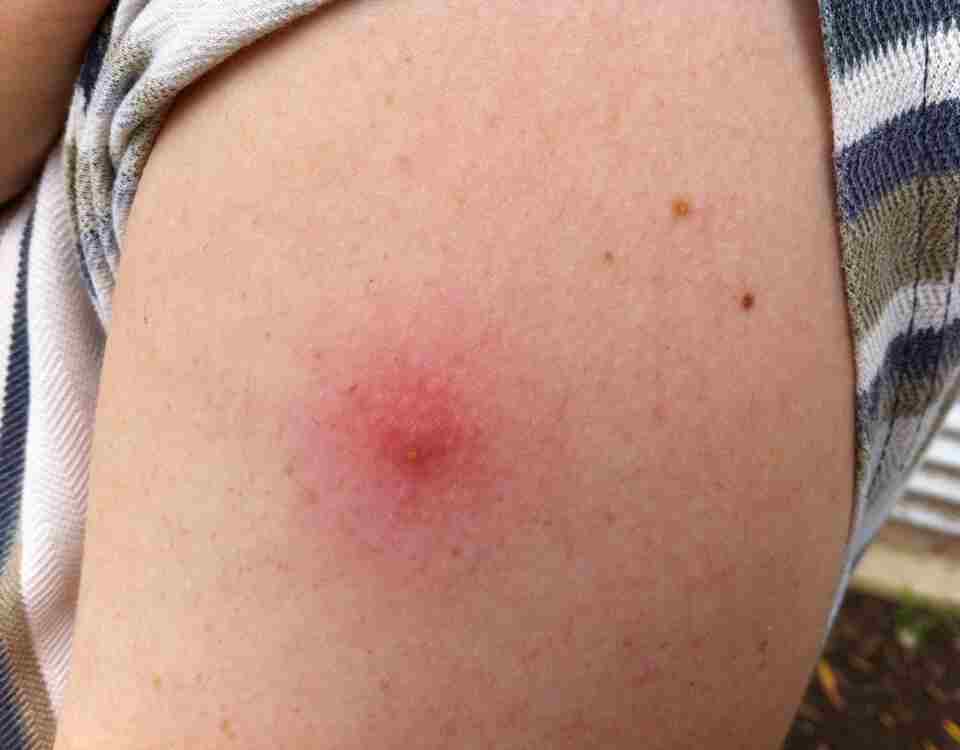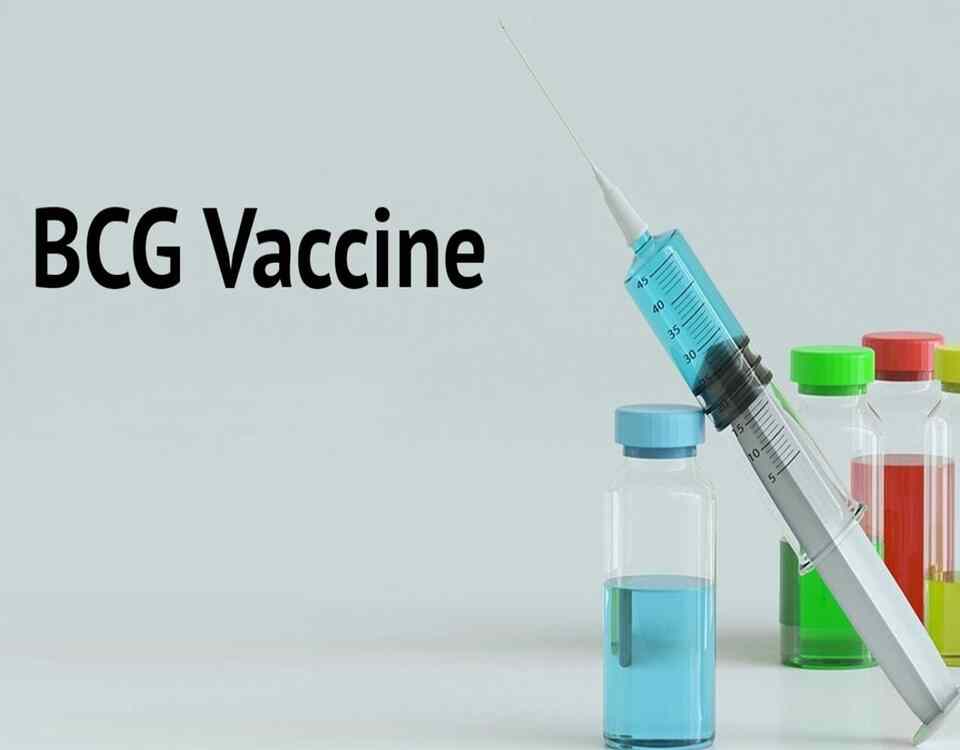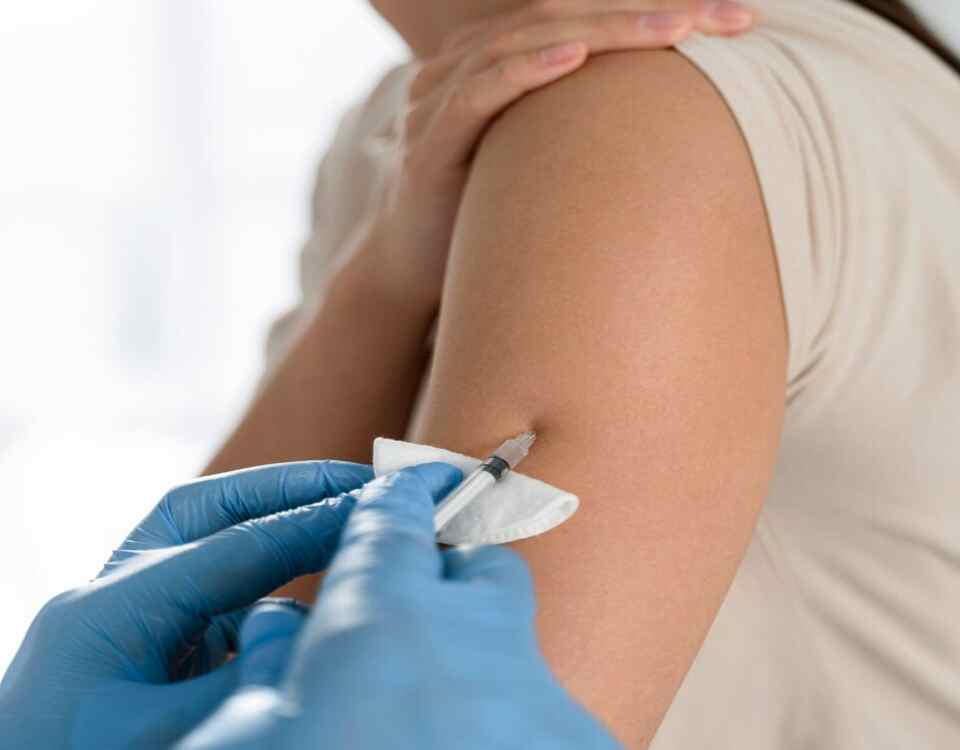
BCG Vaccine Scar! Have you ever wondered about that small scar on your arm that seems to appear out of nowhere? Chances are, it’s from the BCG vaccine you received as a child. Despite being a common childhood immunization, there are still many myths and misconceptions surrounding these vaccine scars. In this article, we aim to debunk seven of the most common myths about BCG vaccine scars to provide you with accurate information and peace of mind.
From rumors about the scar causing cancer to beliefs that it can be removed with household remedies, there are a lot of myths floating around about BCG vaccine scars. It’s important to separate fact from fiction to ensure that you have the right information about your health and well-being. By addressing these misconceptions, we hope to shed light on the truth behind BCG vaccine scars and provide you with a better understanding of this important childhood vaccination.
What is a BCG vaccine scar? How does the BCG vaccine scar form? Can you predict the appearance of a BCG vaccine scar? Does the size of the BCG vaccine scar matter? BCG vaccine is not only for tuberculosis prevention How to care for a BCG vaccine scar for optimal healing? BCG vaccine does not offer lifelong immunity against TB
Table of Contents
ToggleWhat is a BCG vaccine scar?
Have you ever noticed a small, raised scar on your upper arm and wondered what it was from? Chances are, it could be a BCG vaccine scar. A BCG vaccine scar is a mark left behind after receiving the Bacille Calmette-Guerin (BCG) vaccine, which is used to protect against tuberculosis (TB). The vaccine is typically given to infants in countries where TB is prevalent, as well as to healthcare workers who may be at risk of exposure to the disease.
The vaccine is administered by injecting a small number of weakened bacteria called Mycobacterium bovis into the skin. This bacterium is closely related to the bacteria that causes TB, but it has been altered to be harmless. The immune system responds to the presence of the bacteria by creating antibodies, which help to protect against TB infection in the future.
After receiving the BCG vaccine, a small, red bump will appear at the injection site. Over the next few weeks, the bump will gradually turn into a small, raised scar. This scar is a normal reaction to the vaccine, and it is a sign that the immune system has responded to the bacteria and produced antibodies. It is important to note that not everyone who receives the BCG vaccine will develop a scar. Some people may have a more pronounced reaction to the vaccine, while others may have a minimal response.
The appearance of a scar does not necessarily indicate the effectiveness of the vaccine – it simply means that the immune system has been activated in response to the bacteria. Contrary to popular belief, the BCG vaccine scar is not a sign of infection or disease. It is simply a harmless mark left behind by the vaccine. Some people may find the scar to be unsightly or bothersome, but it is important to remember that it is a small price to pay for the protection that the vaccine provides against TB.
In some cultures, the presence of a BCG vaccine scar is seen as a symbol of health and strength. In India, for example, the scar is often referred to as a “luck mark” and is believed to bring good fortune to the individual. In other cultures, the scar may be seen as a rite of passage or a badge of honor.
Overall, the BCG vaccine scar is a normal and benign outcome of receiving the BCG vaccine. It is a physical reminder of the body’s immune response to the vaccine and its ongoing protection against TB. If you have a BCG vaccine scar, wear it as a badge of honor – it means that you have taken steps to protect yourself and others against a potentially serious disease.

How does the BCG vaccine scar form?
Have you ever wondered how that small, faint scar on your upper arm came to be? That’s the mark left behind by the BCG vaccine, a commonly administered vaccine to protect against tuberculosis. But have you ever thought about how exactly the BCG vaccine scar forms? Let’s debunk some common myths and explore the truth behind the formation of this unique scar.
Contrary to popular belief, the BCG vaccine scar is not caused by the needle that administers the vaccine. While it may leave a small mark, the scar forms as a result of the body’s natural immune response to the vaccine. When the BCG vaccine is injected into the upper arm, it stimulates the immune system to produce a strong immune response against the bacterium that causes tuberculosis.
The BCG vaccine contains a weakened strain of the bacteria Mycobacterium bovis, which is closely related to the bacterium that causes tuberculosis. When the vaccine is injected into the skin, it triggers an inflammatory response in the body. This response causes the formation of a small, raised lesion at the injection site, which eventually heals and forms a scar.
Over time, the scar may fade and become less noticeable, but it serves as a reminder of the body’s immune response to the BCG vaccine. The size and appearance of the scar can vary from person to person, depending on factors such as skin type, immune response, and the technique used to administer the vaccine. It’s important to note that the BCG vaccine scar is not a sign of infection or disease. It is simply a harmless side effect of the vaccine that indicates the body’s immune response to the Mycobacterium bovis bacteria.
The presence of a BCG vaccine scar is often used as a marker to determine if someone has been vaccinated against tuberculosis. Some people may mistakenly believe that the BCG vaccine scar is permanent and will never fade. However, like any scar, the appearance of the BCG vaccine scar can change over time. Factors such as sun exposure, skin aging, and genetics can all affect the visibility of the scar.
In some cases, the scar may become less prominent and eventually disappear altogether. Another common myth is that the BCG vaccine scar can become infected or cause health problems. In reality, the scar is a benign and natural part of the body’s immune response. It does not pose any risk of infection or complications, and it should not cause any discomfort or pain.
The BCG vaccine scar forms as a result of the body’s immune response to the BCG vaccine. It is a harmless side effect that indicates the body’s protection against tuberculosis. While the appearance of the scar may change over time, it is not a cause for concern and should be viewed as a positive reminder of the body’s ability to fight off infections. So, the next time you catch a glimpse of that faint scar on your arm, remember that it’s there to protect you against a potentially deadly disease.
Can you predict the appearance of a BCG vaccine scar?
When it comes to the BCG vaccine scar, there are a lot of myths floating around about how it will look and how long it will take to appear. In reality, predicting the appearance of a BCG vaccine scar is not an exact science. One common misconception is that the size of the scar is directly related to the effectiveness of the vaccine. Some people believe that a larger scar means a better immune response.
However, the size of the scar is determined by a variety of factors, such as the technique used to administer the vaccine and the individual’s immune response. So, it is not possible to predict the size of the scar based on these factors alone. Another myth is that the scar will appear within a few weeks of receiving the vaccine. While it is true that most people will develop a scar within a few weeks to months after vaccination, the timeline can vary widely from person to person.
Some individuals may develop a scar sooner, while others may take longer. In some cases, the scar may not appear until several months after vaccination. Additionally, some people believe that the appearance of the scar is influenced by how well the vaccine was administered. While proper administration of the vaccine is important for ensuring its effectiveness, it does not necessarily dictate the appearance of the scar.
Factors such as individual skin types and immune responses play a larger role in how the scar will ultimately look. It is also a common misconception that the scar will fade over time. While it is true that the scar may become less noticeable as it heals, it will not completely disappear. The scar may fade to a lighter color or flatten out, but it will still be present on the skin.
This is a normal part of the body’s healing process and should not be cause for concern. Some people believe that the appearance of the scar is related to the severity of the side effects experienced after vaccination. However, there is no direct correlation between the two. The appearance of the scar is determined by the body’s immune response to the vaccine, not by the presence or absence of side effects.
It is also important to note that there is no way to predict the exact shape or location of the scar. While most BCG vaccine scars are circular or oval in shape and appear on the upper arm, they can vary in size, shape, and location. Some people may develop a scar that is larger or smaller than average, or that appears in a different location on the body.
Predicting the appearance of a BCG vaccine scar is not an exact science. Many factors can influence how the scar will ultimately look, and no two individuals will develop the same scar. While the myths surrounding BCG vaccine scars may be common, it is important to remember that each person’s experience with the vaccine and the resulting scar will be unique.

Does the size of the BCG vaccine scar matter?
You may have heard varying opinions on whether the size of your BCG vaccine scar really matters. Let’s debunk some common myths and set the record straight. One common myth is that a larger vaccine scar means better immunity. This is not necessarily true. The size of the scar does not determine the effectiveness of the vaccine.
The goal of the BCG vaccine is to stimulate an immune response that can protect you against tuberculosis, regardless of the size of the scar. So, don’t worry if your scar is small – it doesn’t mean you are less protected. Another myth is that a smaller scar means you need a booster shot. This is also false. The BCG vaccine is usually given only once in childhood, as it provides long-lasting protection against tuberculosis.
Getting a booster shot is not necessary if you have a small scar or if you can’t see a scar at all. The vaccine is designed to work with just one dose, so there is no need to worry about the size of your scar about needing a booster shot. Some people believe that a faint scar means the vaccine didn’t work. However, the visibility or size of the scar is not an indicator of whether the vaccine was successful.
The BCG vaccine works by triggering an immune response in your body, so even if the scar isn’t very visible, it doesn’t mean the vaccine wasn’t effective. There is also a misconception that the BCG vaccine scar should look a certain way. While some people may have a raised, red scar, others may have a flat, pale scar. The appearance of the scar can vary depending on your skin type and how your body responds to the vaccine.
There is no right or wrong way for the scar to look, so don’t stress if your scar doesn’t match what you expect. Additionally, some believe that rubbing the scar will make it go away or fade faster. However, the scar is a natural part of the healing process, and rubbing it won’t make it disappear. It is best to leave the scar alone and let it heal on its own.
Trying to remove or fade the scar may irritate your skin and could lead to infection. So, resist the urge to touch or rub the scar, and let it heal naturally. Lastly, some people worry that the size or appearance of their BCG vaccine scar will affect their future health. Rest assured, the scar itself will have no impact on your overall health or well-being. It is simply a mark left behind by the vaccine and does not pose any risk to your health in the future.
The size of your BCG vaccine scar does not matter in terms of its effectiveness or your level of protection against tuberculosis. Whether your scar is big or small, raised or flat, visible or faint, rest assured that the vaccine has done its job in stimulating your immune system to protect you against tuberculosis. So don’t stress over the size of your scar – focus on maintaining good health and staying up to date on vaccinations for overall immunity against diseases.
BCG vaccine is not only for tuberculosis prevention
The BCG vaccine is often associated solely with tuberculosis prevention, but did you know that it offers more benefits than just safeguarding against this one disease? Contrary to popular belief, the BCG vaccine can also protect against other serious infections and diseases. One of the lesser-known benefits of the BCG vaccine is its ability to boost the immune system.
Studies have shown that the vaccine can enhance the body’s natural defense mechanisms, making it more resilient against a variety of pathogens. This means that individuals who receive the BCG vaccine may have a reduced risk of developing not only tuberculosis but also other infections such as respiratory syncytial virus (RSV) and even some forms of cancer. Recent research has suggested that the BCG vaccine may have a role in cancer prevention.
Studies have shown that the vaccine can stimulate the immune system to target and destroy cancerous cells, leading to a lower incidence of certain types of cancer in individuals who have received the vaccine. This groundbreaking discovery has opened up new possibilities for using the BCG vaccine as a tool in the fight against cancer. Another common misconception about the BCG vaccine is that it is only effective in children.
While it is true that the vaccine is most commonly administered to infants, studies have shown that individuals of all ages can benefit from its protective effects. Adults who receive the BCG vaccine may experience a significant decrease in the severity and duration of certain infections, making it a valuable tool in preventing illness at any stage of life.
Furthermore, some people believe that the BCG vaccine is only necessary in countries with high rates of tuberculosis. However, the reality is that tuberculosis can affect individuals in any part of the world, making vaccination against the disease a global health priority. The World Health Organization (WHO) recommends that all infants receive the BCG vaccine, regardless of the prevalence of tuberculosis in their region.
One of the most persistent myths about the BCG vaccine is that it can cause serious side effects. While it is true that some individuals may experience mild symptoms such as fever or swelling at the injection site, severe reactions to the vaccine are extremely rare. The benefits of the BCG vaccine far outweigh the potential risks, making it a safe and effective way to protect against a variety of diseases.
Lastly, many people believe that the presence of a BCG vaccine scar indicates immunity to tuberculosis. While the scar is a visible reminder of vaccination, it does not guarantee complete protection against the disease. Individuals who have received the BCG vaccine should still follow recommended health guidelines, such as practicing good hygiene and avoiding exposure to individuals with active tuberculosis, to minimize their risk of infection.
The BCG vaccine offers a wide range of benefits beyond just tuberculosis prevention. From boosting the immune system to potentially preventing cancer, this vaccine has the potential to safeguard individuals against a variety of infections and diseases. By debunking these common myths about the BCG vaccine, we can better understand its importance in promoting overall health and well-being.

Conclusion:
This conclusion effectively addresses prevalent misconceptions surrounding BCG vaccine scars, providing valuable insights into their formation, significance, and implications. By elucidating the truth behind these myths, the article aims to equip readers with accurate information, fostering a better understanding of this important childhood vaccination.
Through thorough debunking, it underscores that BCG vaccine scars are harmless manifestations of the body’s immune response to the Bacille Calmette-Guerin (BCG) vaccine, administered primarily to protect against tuberculosis (TB). Contrary to misconceptions, the scar is not indicative of infection or disease but rather symbolizes the body’s defense mechanism against TB.
The article educates readers on various aspects, including the formation of BCG vaccine scars, their unpredictability in size and appearance, and their negligible correlation with vaccine effectiveness. It emphasizes that the presence or size of the scar does not dictate immunity levels and dispels myths regarding the necessity for booster shots or concerns about future health implications.
Furthermore, it highlights the broader benefits of the BCG vaccine beyond TB prevention, such as enhancing immune resilience against various infections and even potentially aiding in cancer prevention. By debunking myths surrounding side effects and geographical relevance, the article underscores the vaccine’s global significance and safety.
Ultimately, the article encourages readers to embrace their BCG vaccine scars as symbols of protection and underscores the importance of vaccination in maintaining individual and public health.
FAQs:
1. What is a BCG vaccine scar?
A BCG vaccine scar is a mark left behind after receiving the BCG vaccine, primarily used for tuberculosis (TB) prevention. It signifies the body’s immune response to the vaccine, not infection or disease.
2. How does the BCG vaccine scar form?
The scar forms as a result of the body’s immune response to the BCG vaccine, triggered by injecting a weakened strain of mycobacterium bovis. It manifests as a small, raised lesion at the injection site, gradually fading over time.
3. Can you predict the appearance of a BCG vaccine scar?
Predicting the scar’s appearance is challenging due to individual variability in immune response and healing processes. Factors like vaccine administration techniques and skin types influence scar formation.
4. Does the size of the BCG vaccine scar matter?
No, the scar’s size doesn’t correlate with vaccine effectiveness. Whether small or large, the vaccine still offers protection against TB. The scar’s visibility changes over time but doesn’t affect immunity.
5. Is the BCG vaccine solely for tuberculosis prevention?
No, the vaccine also boosts immune resilience against various infections and potentially aids in cancer prevention. It offers broader health benefits beyond TB prevention.
6. Are there any risks associated with the BCG vaccine scar?
Severe reactions to the vaccine are rare, and the scar poses no long-term health risks. It’s a natural part of the body’s immune response and signifies vaccination, not infection.
7. Should I be concerned about my BCG vaccine scar?
No, the scar is a positive sign of vaccination and protection against TB. Embrace it as a symbol of immunity and prioritize vaccination for overall health and well-being.
